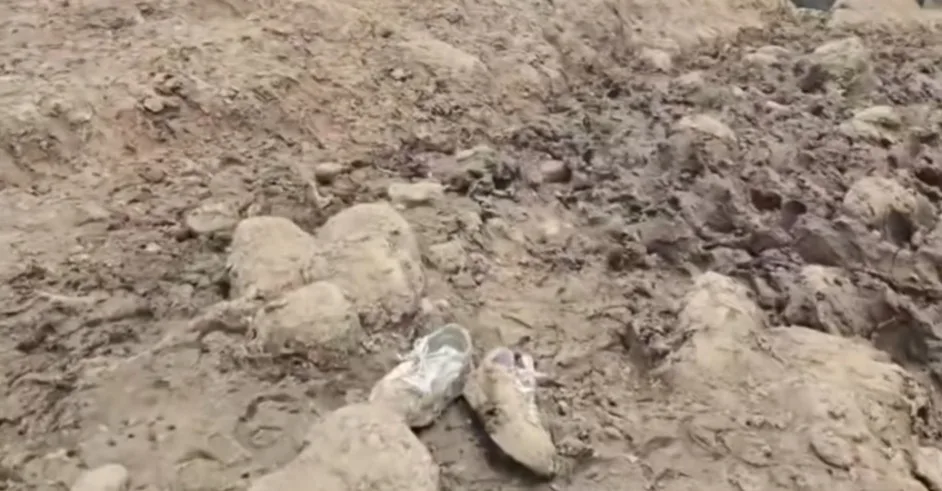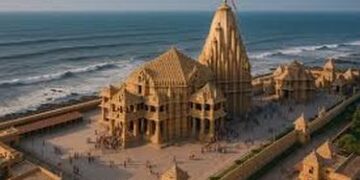
The recent terrorist attack in Pahalgam was not merely an act of violence — it was a calculated assault on the very soul of Kashmir. It targeted not only innocent lives but the intrinsic values the region has always upheld: peace, hospitality, and a profound culture of humanity rooted in centuries of coexistence. While it leaves a deep trail of grief and trauma, it also reminds us of the unshakable resilience that defines the people of the Valley.
PAHALGAM: MORE THAN A DESTINATION, A SPIRIT
Nestled gracefully in the lap of the Himalayas, Pahalgam has, for decades, symbolized peace, spirituality, and connection with nature. Known fondly as the “Valley of Shepherds,” its pristine meadows, serene rivers, and towering deodars have made it not just a tourist destination but a spiritual retreat for countless pilgrims, particularly as the starting point of the revered Amarnath Yatra.
But beyond its scenic landscapes, what defines Pahalgam — and indeed all of Kashmir — is its people. Despite enduring decades of unrest, displacement, and violence, Kashmiris have preserved their ethos of mehman-nawazi (hospitality). The guest, here, is considered an embodiment of God. People go out of their way to help, feed, and host travelers — strangers are treated like family. This culture of open-heartedness is not just tradition; it’s an identity.
THE ATTACK: VIOLENCE MEANT TO DIVIDE
In a deliberate and cowardly act, that serenity was shattered. Armed terrorists opened fire on a tourist vehicle, causing death, injuries, and widespread panic. The location was no coincidence — Pahalgam is a symbol of Kashmir’s beauty and safety. Targeting it was an attempt to sabotage the narrative of normalcy and peace, to scare away visitors, and damage the painstaking progress made in rebranding Kashmir as a welcoming, safe place.
The loss cannot be measured merely in numbers. It is a blow to the spirit of mutual trust, a crack in the fragile bridge between Kashmiris and the outside world. Such attacks seek to reverse years of peace-building. But they have failed before, and they will fail again. The Valley has withstood worse and emerged stronger — because its foundation is rooted in love, not fear.
THE HEROISM OF SYED ADIL SHAH: HUMANITY IN ACTION
While terrorists came with the intent to kill, it was the selfless courage of a local man, Syed Adil Shah, that defined that night. Adil, a native of the area, laid down his life trying to save the tourists. He stood between violence and innocence. He didn’t pause, didn’t hesitate — he acted.
His martyrdom is heartbreaking but also powerfully symbolic. In Adil, we see the soul of Kashmir — not one that harbors extremism, but one that counters it with bravery and compassion. He didn’t die as a bystander. He died a protector. In doing so, he became the face of the Valley’s resilience and humanism.
His sacrifice needs to be remembered not as an isolated act, but as a representation of how ordinary Kashmiris react when darkness tries to invade their land. They stand tall — even if it costs them everything.
THE SILENT MAJORITY: KASHMIR’s TRUE FACE
Time and again, the people of Kashmir have been the first to respond in crises. Whether it’s snowstorms, curfews, natural disasters, or militant attacks, it is the common Kashmiri who offers shelter, food, warmth, and comfort — without seeking recognition or reward. These unsung heroes reflect a truth often lost in political rhetoric and media narratives: Kashmiris are not the problem. They are part of the solution.
Too often, the world sees the Valley through the narrow prism of politics and conflict. The people are painted either as passive victims or, worse, as complicit in the violence. But reality is far more complex and far more inspiring. Kashmiris are the first to condemn violence, the first to mourn the dead, and the first to rise and help — even when they are the ones hurting the most.
In villages and towns, they have built communal kitchens during lockdowns. In times of war, they’ve risked their lives to pull strangers out of collapsed homes. That is the Kashmir you don’t see on television. That is the Kashmir we must talk about.
MEDIA’S ROLE: RESPONSIBILITY OVER RATINGS
This is where the media must play a constructive role. The coverage of such tragic events must go beyond the who, what, and where. It must delve into the human stories — not just the victims but the heroes like Adil Shah who emerge in the face of horror. Unfortunately, much of national media is quick to sensationalize violence and slow to spotlight empathy and courage.
The media must resist the temptation to demonize an entire region or community based on the actions of a few. The terrorists who attacked in Pahalgam were not acting for the people of Kashmir — they were acting against them. They attacked not only tourists but the very culture of peace Kashmiris are striving to reclaim.
Journalists and newsrooms must remember that their words can either build bridges or deepen divides. Now more than ever, the Valley needs narratives of hope and humanity.
A WAKE-UP CALL FOR LEADERSHIP
This attack is also a clarion call for political leaders and security agencies. Beyond enhancing physical security, we need to invest in emotional and psychological healing. Policies must focus on restoring public confidence, empowering local communities, and ensuring that young people in Kashmir are not alienated.
Terrorism does not grow in a vacuum. It festers in places where mistrust, marginalization, and hopelessness prevail. Combating it requires more than guns and intelligence networks. It requires genuine dialogue, economic opportunities, cultural exchange, and above all, inclusion.
Kashmiris must not feel like outsiders in their own homeland. The more we alienate, the more we lose the hearts and minds needed to defeat extremism at its roots.
The Road Ahead: Healing Through Humanity
Healing must be the central theme going forward — healing for the families of the victims, for the wounded, and for every Kashmiri whose sense of safety was shattered once again. But healing will not come from militarization alone. It will come from compassion, justice, and a collective reaffirmation of peace.
Tourism, a lifeline for many in Kashmir, must not be allowed to collapse under the weight of fear. Instead, it should be reimagined — focused on cultural exchanges, eco-friendly initiatives, and direct engagement between travelers and local hosts. Every tourist who returns with a story of warmth and hospitality becomes an ambassador for peace.
Moreover, the government must work alongside local leaders, civil society groups, and businesses to ensure that Kashmir’s economy is not further battered. The answer to terror is not retreat but renewal.
CONCLUSION: STANDING TALL IN THE FACE OF TERROR
The attack on Pahalgam was not just an attack on Kashmir — it was an attack on humanity. It was meant to break spirits, incite fear, and undo years of healing. But if there’s one thing history has shown us, it is that Kashmir never bows. It bleeds, but it does not break.
Let the world remember Syed Adil Shah. Let the world see the families who weep not just for their loved ones but for the pain of others. Let the world witness how Kashmir mourns — not in silence, but in solidarity.
Kashmir will not be defined by bullets or bloodshed. It will be defined by its people. People who, even in tragedy, uphold the dignity of life. People who offer shelter in times of chaos. People who believe that no matter how dark the night, dawn will come — and it will be beautiful.
Let us remember the fallen. Let us honor the brave. And let us collectively ensure that this story — the story of Kashmir — is told not through the lens of violence, but through the language of humanity, hospitality, and hope.
(The author is a Freelancer, Columnist, and National TV Debater. He can be reached at ahmadayaz08@gmail.com





